![Tim and the DragonFly Pro 3D printer [Image: Fabbaloo]](https://fabbaloo.com/wp-content/uploads/2020/05/NanoDi01a_img_5eb0968f36b10.jpg)
Space, defense, smart homes: Nano Dimension is expanding the reach of 3D printed electronics.
Announcement after announcement seems to come out of the Israeli company as the 3D printing of electronics is gaining momentum. New installations, agreements, and achievements seem to come at full speed; in the last month and a half alone, the company has announced second and third DragonFly Pro purchases at TTM, a 3D printed IoT communication device, and, just today, a collaboration to develop hardware for the International Space Station.
Phew.
It’s a lot to keep up with, so I sat down recently with VP of Global Sales and Customer Care Tim Sheehan of Nano Dimension USA.
TTM, which now has its three systems, is a world leader for printed circuit boards (PCBs), Sheehan noted — and a strong strategic partner. Nano Dimension, TTM, and Germany-based Hansoldt are strategic partners “making great plans” to address Tier 1 research for the Department of Defense, Sheehan noted.
“We’re seeing an increased application footprint,” he noted mildly.
That also includes a new feature set, such as the recently-introduced ability to design capacitors.
“You can print a layer just for the capacitor. At the R&D level, you don’t have to buy a capacitor, you can design it. That saves on the need to buy it, to spend the time soldering. There’s increasing productivity, which reduces the cycle time of efforts. We’re giving the ability to test projects without all that other extraneous work involved,” Sheehan said.
The ability to 3D print electronics in-house is “expanding the minds of electrical engineers,” he added.
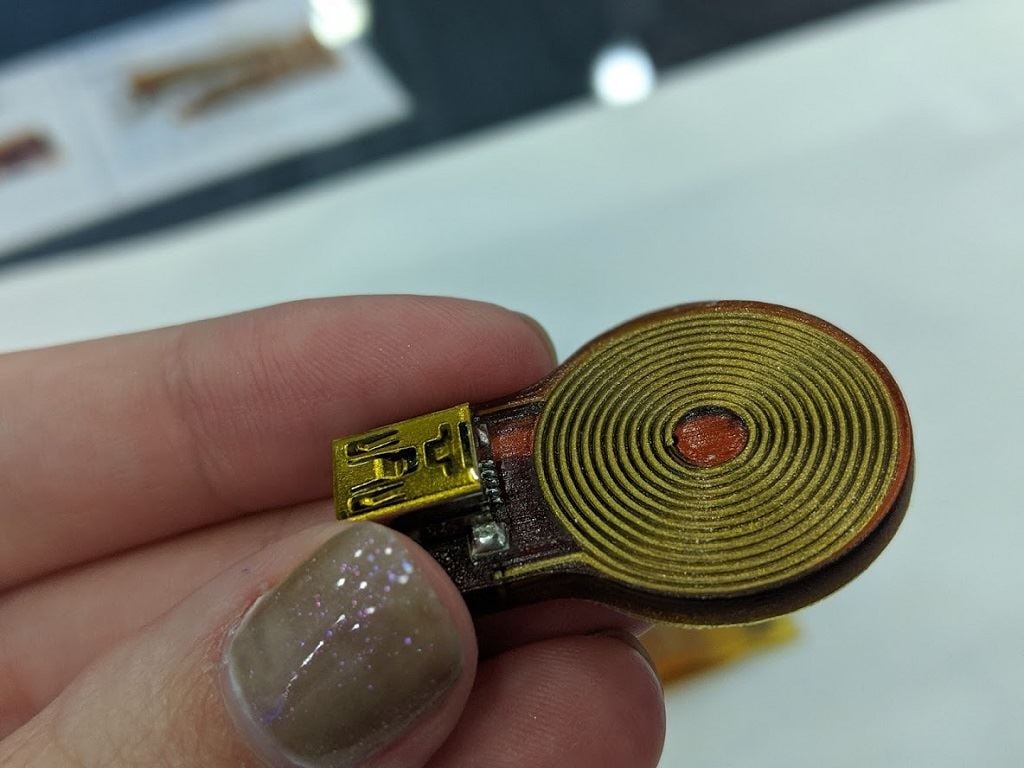
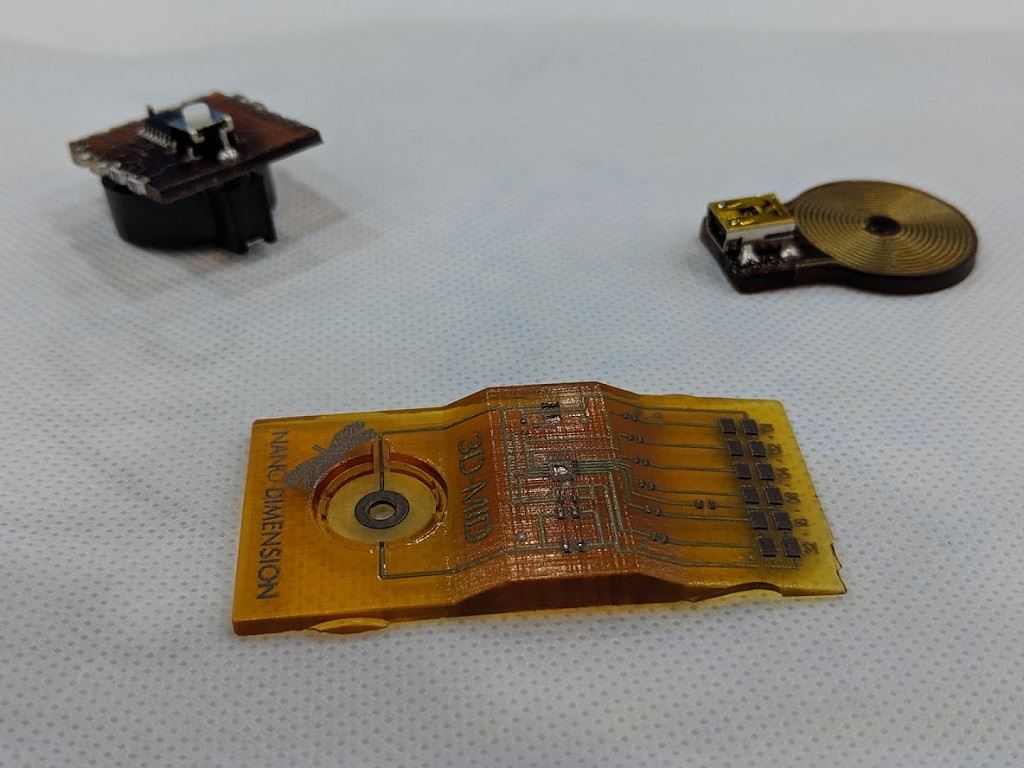
3D printed electronics configurations possible [Images: Fabbaloo]
3D printing is famously able to expand the possible geometries for a given part. While often this means space-age structures that reek of generative design and a love of lattices, when it comes to PCB manufacture, that means much more.
We often talk about part consolidation, which comes in handy for reducing weight and welding in complex aerospace assemblies — but in this sense can also mean printed capacitors, mountings on the side instead of just the traditional top or bottom, and other interesting feature applications that are broadening possibilities for integrated electronics.
“It stretches their minds when we show them circuitry in three dimensions,” Sheehan said, holding up an indeed three-dimensional Molded Interconnect Device (MID).
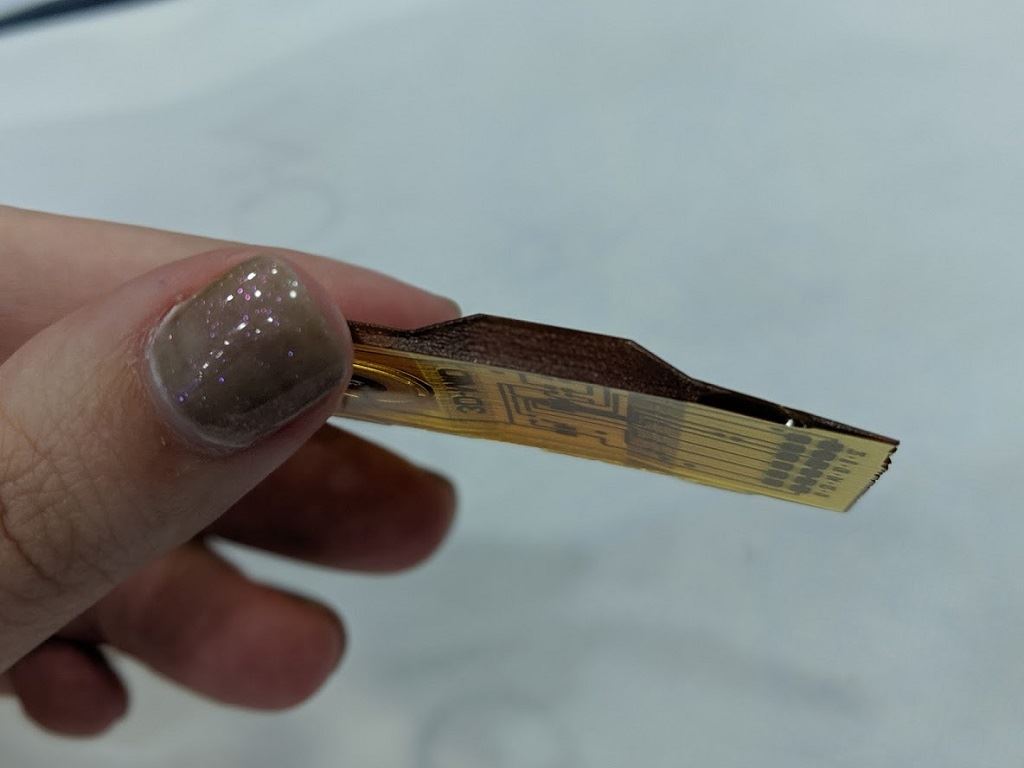
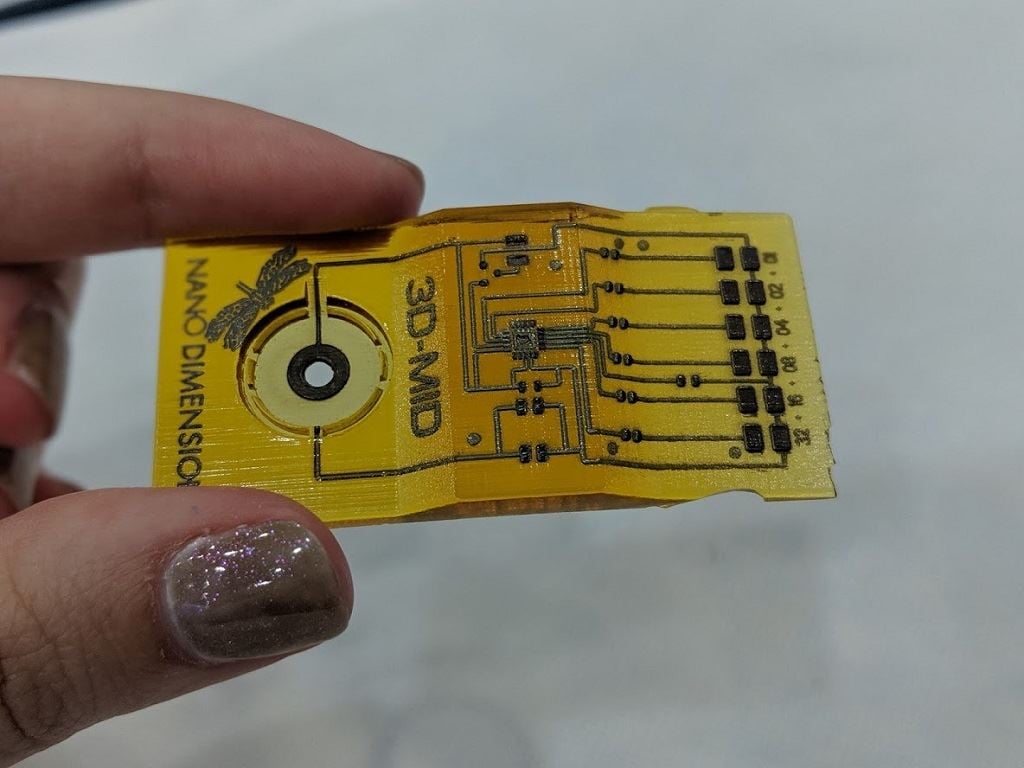
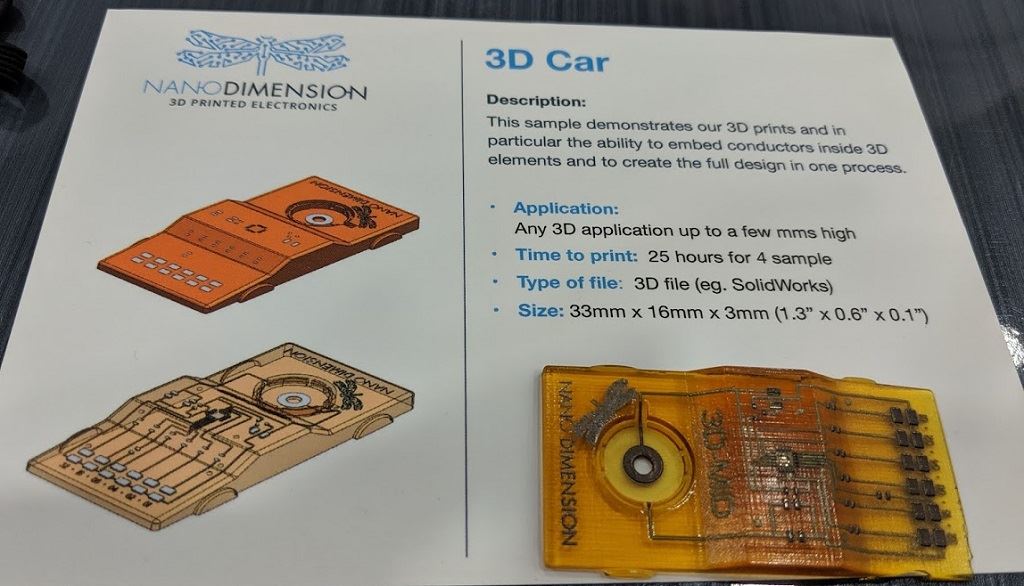
The 3D-MID [Images: Fabbaloo]
If you’re thinking only DoD and ISS for their parts, think again; for the MID, Sheehan pointed to use cases that are well outside the box. Or inside, if your McDonald’s still packages Happy Meals in boxes — such parts could be used to power kids’ toys in fast food meals, offering “safe, internal” powering.
The parts possible with Nano Dimension’s powerful DragonFly Pro system are indeed relatively mind-stretching. The company is always looking ahead, “beyond the bubble” of 3D printing, as it were, and toward production, toward real-world, realizable usage.
And there’s certainly much more to come from the busy company. Loosely, Sheehan would say on the record, there’s “a lot to look forward to in Q3 and Q4.” (Stay tuned around formnext.)
Via Nano Dimension

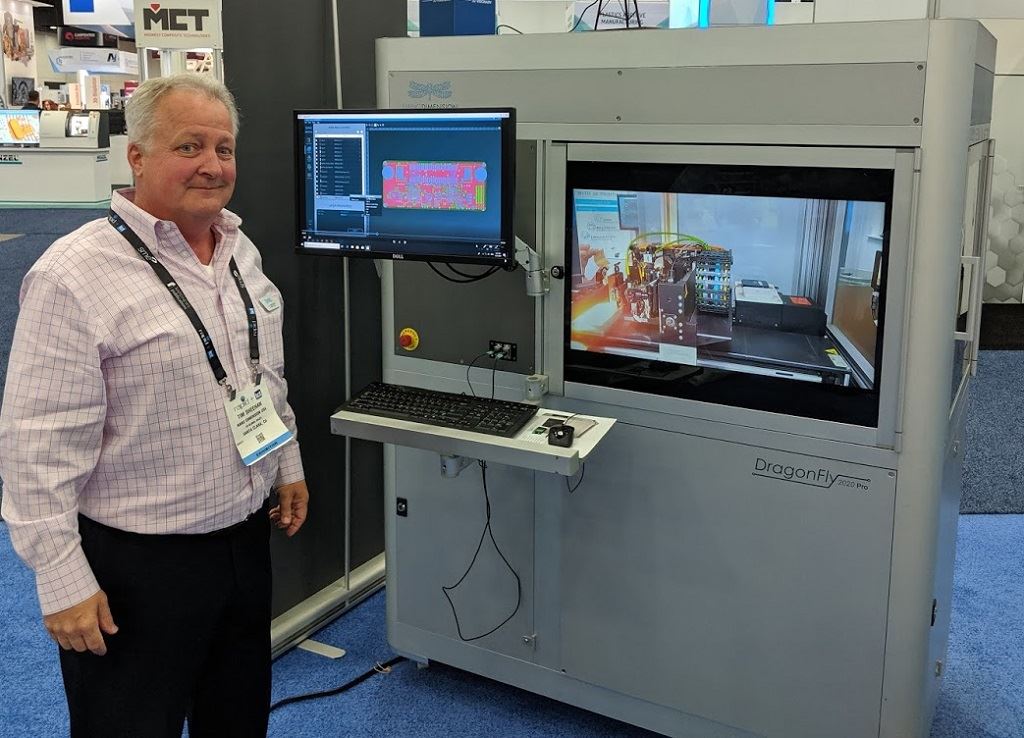










1 comment
Comments are closed.